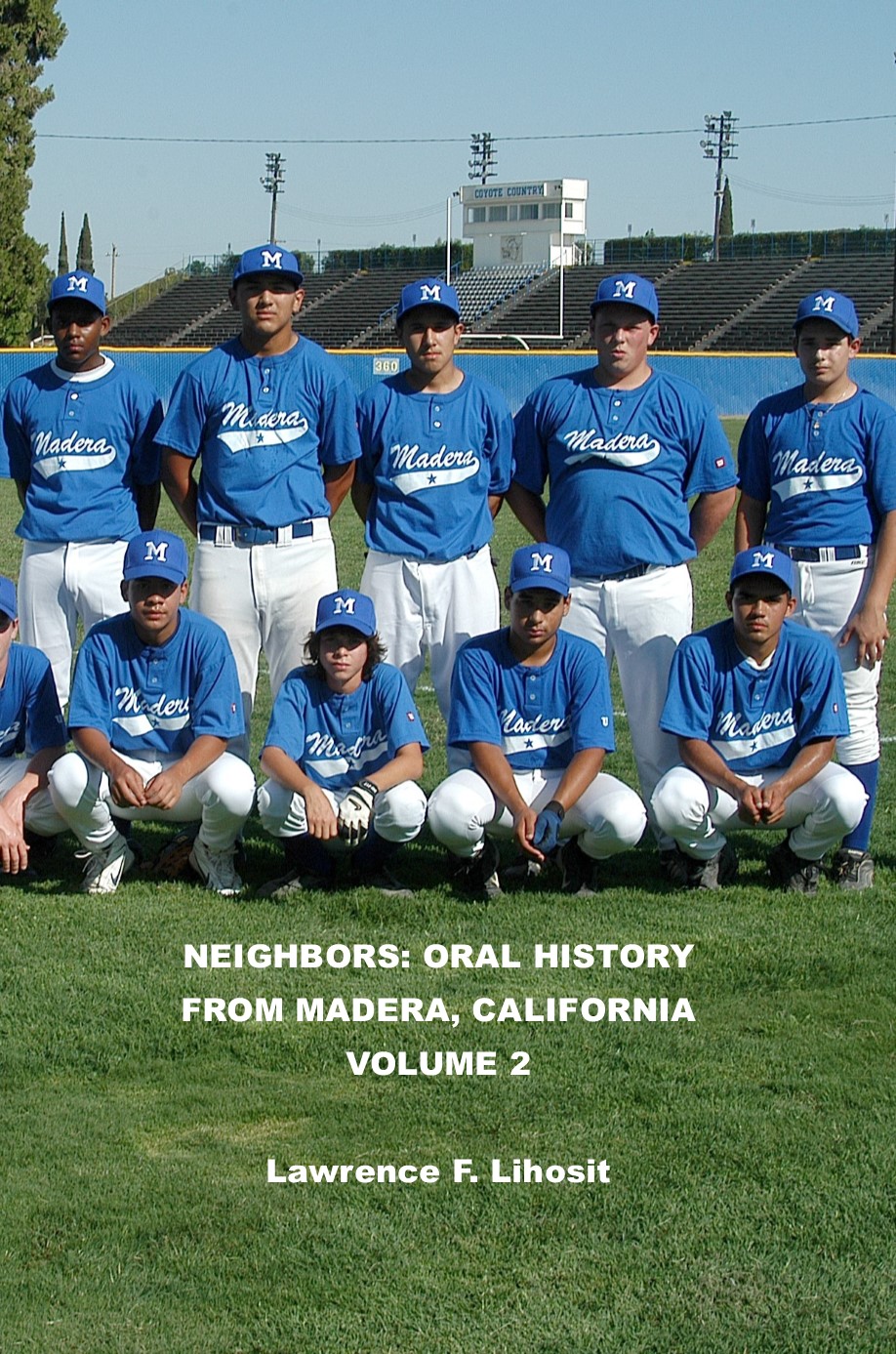Review — NEIGHBORS: VOLUME TWO by Lawrence Lihosit (Honduras)
Neighbors: Oral History From Madera, California, Volume 2
by Lawrence F. Lihosit (Honduras 1975-77)
Self-Published
200 pages
August 2020
$20.00 (Paperback)
Review by Joanne Roll (Colombia 1963-65)
•
In the age of Twitter and Text, Lawrence Lihosit has once again demonstrated the power of the oral history interview.
This is Lawrence Lihosit’s second volume of Neighbors. In Volume One of Neighbors, Lihosit published Oral Histories which he had recorded with some of his neighbors in this California Central Valley town of Madera. In Neighbors Volume Two, Lihosit continues with 21 more Oral Histories.
Lishosit and his family have lived in Madera since 1995 and these interviewees are truly his neighbors. His own history as a Peace Corps Volunteer in Honduras (1975-1977) and his years of writing and traveling, as well as working as an urban planner, are reflected in the organization of the book as well as the care with which he recorded. Many of the interviews were conducted in Spanish.
From his introduction:
This book is based on testimony…this book is not scientific. My intent was never to measure but just to listen and share…This is not a random sample survey to be used for a poll. These are true stories from our neighbors.
Lihosit gives a context for the Oral Histories with an overview of the history of the town.
Madera grew from a small rail road stop to a thriving agricultural center. Early immigration built the town and Lihosit gives a chronology showing who came when and why. Only one is the son of pioneers to the town. Chinese immigrants and Italian immigrants came to work in the fields, in the beginning. This growth was halted by the harsh immigration laws of 1920s. In the 1930, people from Oklahoma and Arkansas came, fleeing the Dust Bowl and the Depression, Texas is also well represented. The Bracero programs of the 1950s brought many immigrants from Mexico. The U.S. Census, dated 2015, showed that 80% of the population in Madera was Hispanic. In a similar report on language spoken, dated 2020, 58% of Madera spoke Spanish or Spanish/English. Only 38th percent were English only. Lihosit conducted some interviews in Spanish.
The heart of the book are the stories. Yet the whole is greater than the sum of its parts. In reading Neighbors, I began to “see” Madera. I also began to better understand the history of the United States.
Most of the people interviewed came from different backgrounds and different rungs on the “economic ladder”. But all are incredibly independent and resilient, recovering from job loss or disappointment. All speak in detail about their jobs and what they learned and accomplished.
Among the Interviewees were teachers, a newspaper editor, disk jockey, business people, an author and judge and a developer who worked in the private sector and then directed the public “Madera Redevelopment Agency. A Colombian woman with a CPA emigrated to America after applying to a ‘marriage agency” in Bogota and came as a “mail order bride.” Another recent immigrant was an woman attorney from Mexico. She immigrated to Madera, worked as a maid and nanny and then founded her own janitorial service.
For me, the most interesting story was that of a California Highway Patrol Police Dispatcher. She detailed how important it was to relay accurate information quickly to responding officers so they could be safe and successful in their efforts. I had never realized how important such a job was and the skill required to do it well.
Lihosit concludes his book with more information about Madera. He includes his own drawings comparing the growth of Madera from town to city. He printed the graphs showing changes in population and language dominance.
Although Madera has had a large Hispanic majority, the city officials have traditionally been Anglo. Lihosit explained that once the municipal moved from all at large elections to district elections, the ethnic make-up of City Council began to change. Lihosit listed the names of all the mayors of Madera, but the list of City Council members is incomplete. City offices refused to release all the names or allow him to search the files.
Lihosit, thoughtfully, included in his book, copies of the California Code which mandates those Records be made available to the public!
I think both Volumes of Neighbors should be on the reading list for college courses in Sociology, Anthropolog , Political Science, and History. This is my opinion, not the one advanced by Lawrence Lihosit. As noted in the beginning, he stated, firmly
This book is not scientific. My intent was never to measure but just to listen and share. He concludes, “…we are all neighbors just listening to each other so we might work together better.
That is exactly the reason I believe these books should be widely read.
•

No comments yet.
Add your comment